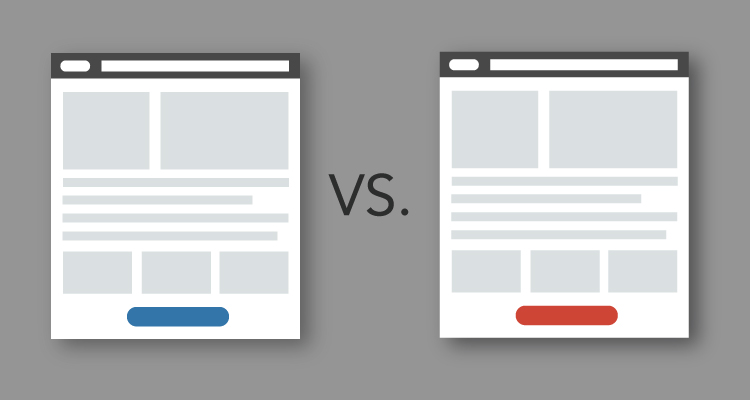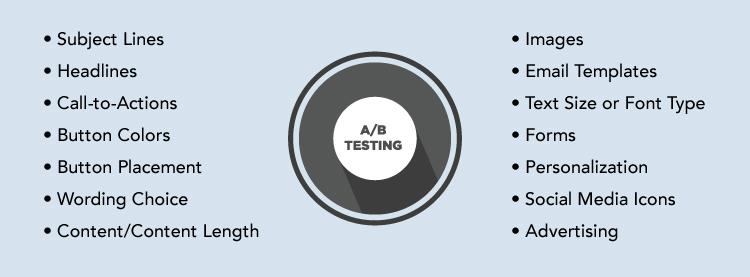When I think of A/B testing the concept reminds me of when I was a little kid at Meijer with my siblings. Sometimes we would get to pick out candy in the checkout aisle and it was always between two different family favorites: Skittles and M&M’s. My brother would always go with the Skittles while my sister would almost always pick the M&M’s. Although I liked M&M’s, I usually picked the Skittles because the bag was brighter and more colorful – not to mention the candy was a lot more sugary. At the end of the day, Skittles usually won the battle.
To put it simply, A/B testing is merely that. It’s about experimenting with different ideas and elements on your website, in your emails, or within your ads to figure out what people are more likely to resonate with (or what they will be more attracted to). Identifying these patterns and conclusions ultimately helps your audience accomplish your most important goal: taking action. Your webpages, one pagers, emails, etc. should of course visually look sharp, but it’s about the strategy behind those different components that’s really going to matter in the long run.
What types of things should you be testing?
The list is endless as you can experiment and compare almost anything. If you’re just getting started or are new to A/B testing, sometimes it’s hard to determine what to compare. Below you will find a list of common things companies run tests on.
How does A/B testing work?
Determining what you want to test to increase form conversions on your website or clicks on your emails for example, is priority number one in this process. From there you can think of it as being back in your 6th grade science class. You need to determine your hypothesis, control, independent, and dependent variables. Consider the following example:
Hypothesis: Red CTA buttons at the bottom of your emails are more likely to be clicked than blue CTA buttons.
Control: In order to ensure consistency, the email with the blue button will be sent to half of your segment, while the email with the red button will be sent to the other half of your segment. The two emails with the different buttons will also be sent on the same day at the same time to avoid any change in variables that may affect the results.
Dependent Variable: The email with the blue button that you have been using for the past month in your campaigns.
Independent Variable: The same email but the button color is changed to red instead of blue.
Once you send out the email, you can analyze your results to determine which button had more clicks between the two.
This is just one way you can go about A/B testing. It’s not a process that’s limited to experimenting with merely two variables, as you can and may want to test out multiple button colors, headlines or other elements to determine the strongest option (just remain consistent in your methods). Beyond button colors, the placement of the button within the email could be another thing you want to test down the road. Overall, the point of A/B testing is to conclude the best marketing strategies that will deliver the desired action(s) that, in the end, contribute to your bottom line.


